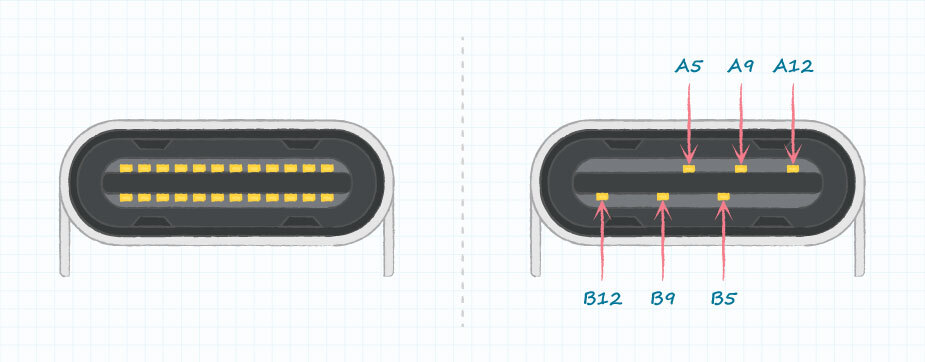August 14, 2020
USB connectors were introduced in the mid 1990’s and have evolved in their size, shape, data transfer capabilities, and power constraints ever since. Today, the latest physical standard is Type C and besides greater bandwidth and being both bi-directional and reversible, this newest iteration is capable of significantly higher power transfer than previous generations. When it comes to USB connectors, there are three different associated standards: the physical connector, data transmission protocol, and power delivery. CUI Devices has an in-depth blog describing these standards here. From a high level, a USB Type C connector follows the physical connector standard. This physical standard is designed to meet the power delivery standard up to 100 W, which opens up USB to a new realm of power opportunities.
| Specification | Maximum Power | Maximum Voltage | Maximum Current |
| USB 2.0 | 2.5 W | 5 V | 500 mA |
| USB 3.0 and 3.1 | 4.5 W | 5 V | 900 mA |
| USB BC 1.2 | 7.5 W | 5 V | 1.5 mA |
| USB Type-C 1.2 | 15 W | 5 V | 3 A |
| USB PD 3.0 | 100 W | 20 V | 5 A |
A standard USB Type C connector houses 16 data transfer pins, 4 power pins, and 4 ground pins for a total of 24 pins. With up to 100 W of power capability, USB Type C is now a viable option for many applications needing significant quantities of power and can replace a standard dc power connector even when data transfer is not required.
The largest benefit of using USB as a method of power delivery is standardization. USB connectors have become ubiquitous and the transition to Type C is quickly gaining momentum. Many new phones and mobile devices are already shipping with USB Type C, plus there is an increasing likelihood that the EU will move to adopt the Type C connector as the charging standard for all devices in the future. The promised convenience of utilizing a single, off-the-shelf cable type for many different products is extremely enticing to an end-user. From an OEM standpoint, these connectors, both power only and data+power, are easy to find with a very stable supply chain as the standardization guarantees a certain level of interoperability. The standard also ensures easy design integration and Type C has a much smaller footprint than many barrel connectors. Finally, USB Type C connectors are robust with a rating of 10,000 mating cycles, ensuring a long and useful life.
Because of the benefits listed above, CUI Devices has developed a power-only USB Type C receptacle for designs where charging or power delivery is the sole function. CUI Devices’ power-only USB Type C receptacle removes the 16 data transfer pins and 2 of the ground pins, leaving only 4 power pins and 2 ground pins.

Thanks to the simplified design of the connector itself, with only 6 pins instead of the standard 24, the cost of the connector is significantly reduced. Besides the lower part cost, it reduces the complexity and failure rate by eliminating the majority of the pins and associated solder points. While these are unable to be used for transferring data, they work with any standard USB Type C cable that transfer both data and power, so there are no additional steps or hardware needed by the end-user when interacting with the product.
While USB Type C connectors are extremely useful in a wide range of scenarios, there are times that dedicated power delivery options are still a practical solution. For example, with a hard limit of 100 W, Type C will simply not work in cases where more power is necessary. In other instances, a different footprint or connector size might be needed due to particular design constraints. Ultimately, when a more custom solution is needed, a USB Type C connector could be limited by its standardized footprint, size, and specifications. For more information on when other power connectors can still be the best solution, read CUI Devices’ blog on selecting a dc power connector.
USB Type C connectors and the Power Delivery standard have opened a new way to look at power management and transmission. While not the end-all solution, its high-power capabilities and global standardization makes it an excellent option to consider for many different products. When only power delivery is needed, CUI Devices’ power-only USB Type C connector is an intriguing solution for engineers due to its lower cost and simplified design integration.
CUI Devices currently offers a 60 W power-only USB Type C receptacle with a maximum 3 A current rating and 20 Vdc voltage rating. A 100 W version is in development and will be available soon that boasts the full 5 A current rating and 20 Vdc voltage rating supported by USB Type C connectors.
By Jeff Smoot
Back